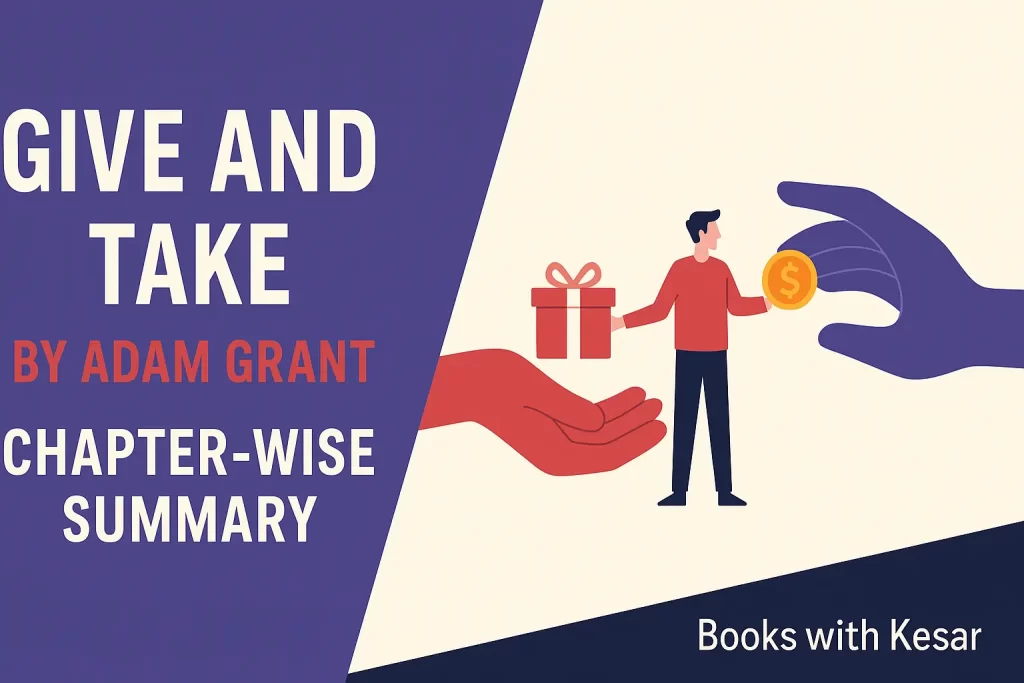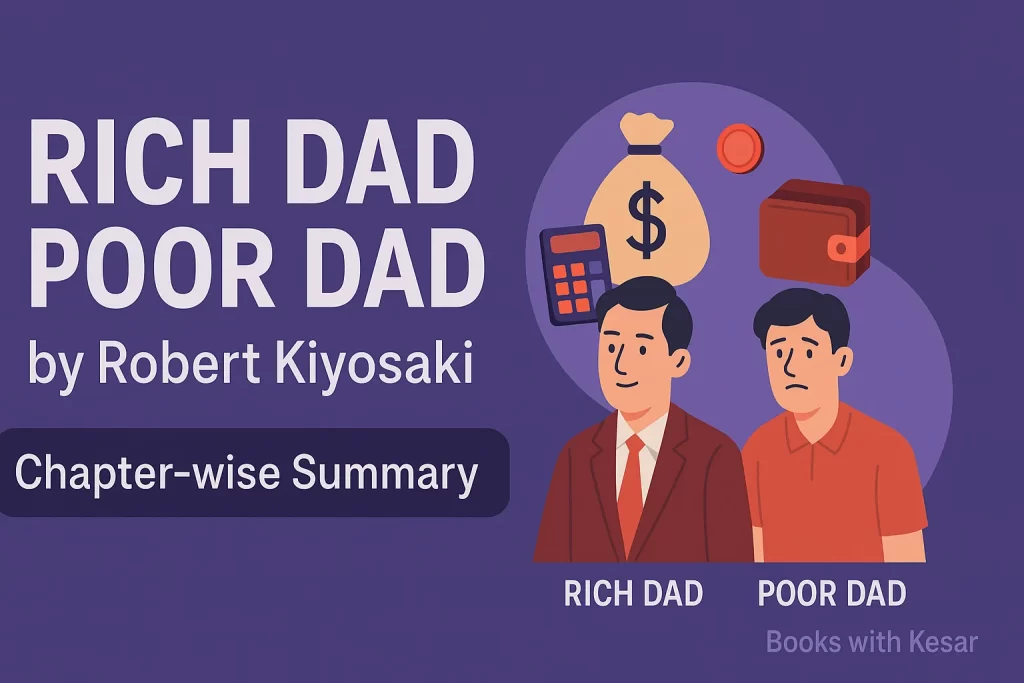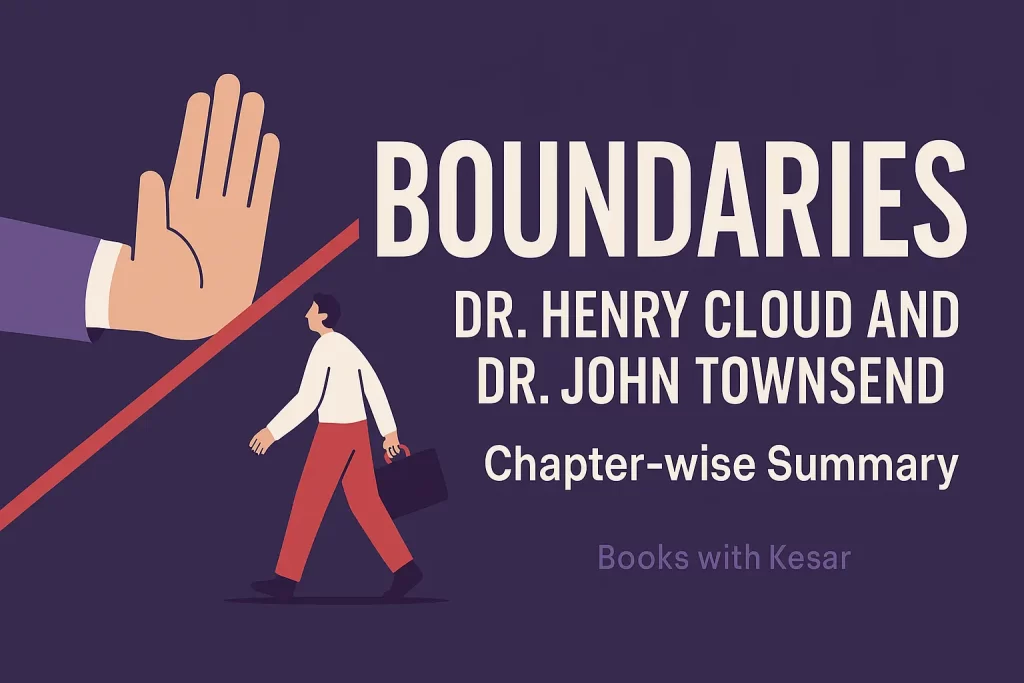
What if everything you’ve been told about success is a lie?
You’ve been fed the hustle-culture soup, garnished with phrases like “nice guys finish last” and “if you want to make it, you’ve got to take what’s yours.” Sounds badass, right? Except—it’s dead wrong.
In Give and Take, Adam Grant doesn’t just throw shade at the take-what-you-can-get mentality—he rips it apart with data, real-life stories, and cold, hard truth. This book doesn’t whisper sweet nothings into your ear. It challenges your core beliefs about what it really takes to win in life and business. And spoiler alert: the cutthroat climbers? They’re not always the ones who reach the top.
You’ll meet the givers—those unicorns who actually succeed by helping others win. Wild concept, right? Especially in a world where the loudest voice often gets the mic, and the most aggressive person gets the deal. But Grant backs it up, showing you how generosity isn’t just morally right—it’s strategically brilliant when done right.
This isn’t some fluffy self-help book wrapped in positivity. It’s a strategy manual for smart, generous people who are tired of being overlooked. If you’ve ever felt like being kind is a weakness or that giving too much will get you burned, this book will shake that idea to its core—and maybe even piss off a few cynics along the way.
Ready to unlearn what society taught you and flip the power dynamics of success? Let’s dive into the truth, chapter by chapter.
Want This Book for Free? Start Your Audible Trial & Own Your First Audiobook—Even If You Cancel!
Table of Contents
ToggleChapter 1: Good Returns – The Dangers and Rewards of Giving More Than You Get
Welcome to the paradox playground—where being too nice might just crush your career… unless it doesn’t.
In this chapter, Adam Grant kicks off with a bold observation: not all givers thrive—some get walked all over. They burn out, get exploited, and fall to the bottom of the success ladder. But here’s the plot twist: the ones at the very top? Also givers.
Wait, what?
That’s the beautiful contradiction Grant explores. Using stories ranging from medical students to Silicon Valley entrepreneurs, he dissects how giving can either be your greatest downfall or your ultimate power move—depending on how you do it.
You’ll meet examples like David Hornik, a venture capitalist who flips the script in a world obsessed with secrecy and competition. Instead of guarding opportunities, he shares them. Instead of rushing to outbid others, he invites collaboration. And guess what? It doesn’t make him lose—it makes him magnetic. The best deals find him.
But don’t mistake this for a sunshine-and-rainbows message. Grant is blunt: naive giving is dangerous. Givers who don’t set boundaries get drained, sidelined, and forgotten. They say yes to everyone and everything, and end up overwhelmed and underappreciated.
The real magic happens when you learn how to give with strategy—when you can serve others while protecting your own bandwidth. Think of it like emotional jiu-jitsu: you use generosity as a strength, not a sacrifice.
The takeaway? If you’re going to be a giver (and you should), don’t just give blindly—give smartly. Learn to filter, prioritize, and protect your time. That’s how you make generosity your secret weapon instead of your Achilles’ heel.
This chapter sets the stage: giving isn’t about martyrdom. It’s about amplifying your impact—and yes, your success—by lifting others up without losing yourself in the process.
Chapter 2: The Peacock and the Panda – How Givers, Takers, and Matchers Build Networks
So here’s the tea: your network isn’t just who you know—it’s how you show up for them.
In this chapter, Adam Grant breaks down the three interaction styles dominating your workplace, LinkedIn feed, and life:
Givers: They help with no strings attached.
Takers: They help only when it benefits them.
Matchers: They trade favors like it’s a corporate barter system.
Grant throws us into the real-world jungle of relationships and shows how each type builds their web. The taker is the loud peacock—showy, self-serving, and obsessed with climbing fast. Think name-droppers and credit-stealers. But here’s the twist: they often burn bridges just as quickly as they build them.
Then there’s the panda-like giver—warm, trustworthy, and underestimated. At first glance, it seems like takers and matchers dominate the professional world. But when you zoom out, the givers quietly build the most powerful networks—the kind people actually want to support.
Enter Adam Rifkin, dubbed the most connected man on LinkedIn. He’s a giver through and through—helping others, making introductions, offering advice—without keeping score. His relationships are built on authentic generosity, and guess what? That magnetizes opportunity, because people root for givers.
But Grant doesn’t romanticize it. He’s clear: givers aren’t always the ones making the most noise or collecting the fastest wins. They play the long game—and when it pays off, it pays off big.
Here’s the kicker: in a world obsessed with networking tactics, givers don’t need tactics. They become invaluable by being real. They don’t hoard power—they distribute it. And in return, people trust them, support them, and remember them.
The message? Forget transactional networking. Lead with value, not with your agenda. Want to grow a powerful, meaningful network? Stop peacocking. Start panda-ing. 🐼
Chapter 3: The Ripple Effect – Collaboration and the Dynamics of Giving
This chapter slaps hard if you’ve ever been part of a team where one person does all the work and the other just…exists.
Adam Grant dives into how giving behavior plays out in teams, and spoiler alert: it doesn’t always look pretty at first. In collaborative environments, givers are often the ones doing the invisible labor—staying late, mentoring newbies, smoothing conflicts. And while that sounds noble, it can easily lead to burnout and resentment if the dynamics aren’t right.
But here’s where the ripple effect kicks in: when even one giver sets the tone in a group, others start to mirror that behavior. Why? Because generosity is contagious—but only when it’s genuine and consistent.
The chapter unpacks powerful real-life examples, including a medical team where a surgeon’s humble, generous leadership improved performance across the board. Not because he barked orders, but because he asked questions, listened, and encouraged others to contribute. That created psychological safety—a breeding ground for innovation and trust.
Grant also throws light on the science: studies show that teams with at least one giver are more effective and resilient. But there’s a catch: if the group has too many takers? Game over. Takers suck the oxygen out of collaboration. They hoard credit, pass blame, and erode trust faster than you can say “group project.”
Another bomb Grant drops? Matchers step up in the presence of givers. They start giving back—not out of generosity, but out of fairness. And that’s fine, because it still creates a positive loop. So in effect, one strategic giver can elevate the entire ecosystem.
But again—boundaries matter. Smart givers don’t just say yes to everything. They say yes to what matters, protect their energy, and collaborate with intention.
The takeaway? If you want to build a killer team, don’t just look for talent. Look for the person who’s willing to share it. Collaboration isn’t just about splitting tasks—it’s about multiplying impact. And givers? They’re the spark that ignites that fire.
Chapter 4: Finding the Diamond in the Rough – The Surprising Power of Giver Coaches
You’ve heard it before: “Talent wins games, but teamwork wins championships.” Adam Grant goes a step further and drops this truth bomb—givers win championships by spotting talent no one else sees.
This chapter zeroes in on a wildly underrated superpower of givers: their ability to bring out the best in others, especially those who’ve been overlooked. While takers and matchers chase the obvious MVPs, givers are in the trenches, coaching the underdogs, mentoring the quiet ones, and investing in potential instead of polish.
Case in point? George Meyer—the writer behind many of The Simpsons’ best episodes. He wasn’t the loudest or most celebrated, but he made others shine, often ghostwriting the funniest lines and never demanding credit. That’s the giver style: low ego, high impact.
Grant also highlights C.J. Skender, a professor whose students have gone on to crush it in fields like finance and accounting. He doesn’t just teach; he nurtures. He pushes his students because he believes in them, long before they believe in themselves. This isn’t charity—it’s vision.
Here’s the kicker: givers often make the best talent scouts and developers, not because they’re soft, but because they see what others don’t. They spot grit, integrity, and growth potential. They give people chances—and then equip them to crush it.
But again, Grant brings the real talk: givers can also get burned. Pouring into the wrong people—the entitled, the lazy, the manipulative—can drain your energy and stunt your impact. The solution? Be generous, but selective. Back those who put in the effort. Don’t rescue people who refuse to swim.
The chapter teaches this: long-term success isn’t about finding stars—it’s about growing them. And if you’re the kind of person who invests in others, you’re not soft—you’re a force multiplier. Because in a world chasing résumés, givers are out here building legacies.
Chapter 5: The Power of Powerless Communication – How to Be Persuasive Without the Ego
This chapter is a mic-drop moment for every introvert, underdog, and humble powerhouse who’s been told to “speak up louder” or “fake it till you make it.” Adam Grant flips the script and shows you how powerless communication—yes, the kind that sounds soft, uncertain, even vulnerable—can be your most persuasive tool.
Sounds backwards? That’s because the world loves confidence. It worships the bold. But here’s the twist: when givers speak without ego, they earn trust faster and connect deeper.
Grant brings receipts. From lawyers to entrepreneurs, he shows that people who admit their weaknesses, ask questions, and express doubt (instead of bulldozing with bravado) often win more trust and influence. Why? Because they seem more human, more relatable, and less manipulative.
You’ll meet people like Bob Sutton, a Stanford professor who shows how humility isn’t weakness—it’s strategic strength. When you admit what you don’t know, it invites collaboration. When you listen more than you speak, people lean in.
But let’s be clear: this isn’t about shrinking yourself or being spineless. It’s about confidence without arrogance. Givers use powerless communication on purpose—they disarm defensiveness, open up dialogue, and win people over without ever raising their voice.
Grant throws in studies that show candidates who acknowledge their flaws are actually rated as more credible, especially when their audience is skeptical. And in high-stakes environments—think negotiations, job interviews, or leadership—this soft-power approach often outshines the chest-thumping alpha act.
But here’s the nuance: powerless communication only works if you’ve got the substance to back it up. Humility without skill is just self-deprecation. But when competence meets humility? That’s when the magic happens.
Takeaway? You don’t need to dominate the room to own it. Influence isn’t about having the loudest voice—it’s about creating space for others to lean in. And when you combine giving behavior with authentic communication, you don’t just persuade—you inspire.
Chapter 6: The Art of Motivation Maintenance – Why Some Givers Burn Out and Others Stay Strong
This one’s for every giver who’s ever hit a wall—emotionally drained, professionally exhausted, and wondering if maybe the takers were right all along.
In Chapter 6, Adam Grant tackles the elephant in the room: giving can be exhausting. If you’re constantly helping others, saying yes to every request, and putting everyone else’s needs above your own, you’re not a hero—you’re a burnout case waiting to happen.
But wait—some givers don’t burn out. In fact, they thrive. So what’s their secret?
Grant reveals that the givers who flourish are the ones who learn to sustain their motivation. They don’t rely on guilt. They don’t give indiscriminately. Instead, they tap into meaning, purpose, and structure. It’s not about being available to everyone—it’s about being available to what matters.
Enter the five-minute favor—a genius strategy popularized by networking guru Adam Rifkin. It’s simple: help others, but in small, impactful doses. Make a valuable intro. Share a resource. Offer insight. But don’t drain your tank. That’s how sustainable giving works.
Grant also shows that givers stay strong when they see the impact of their work. For example, a group of fundraisers doubled their productivity—not after a pep talk from a manager, but after hearing from students whose scholarships they helped secure. Boom: instant motivation refill.
He also distinguishes between selfless givers (who often get exploited) and otherish givers—those who care about others but also respect their own limits. These otherish givers know how to say no without guilt, how to protect their time, and how to make giving a choice—not a compulsion.
Key takeaway? Giving shouldn’t feel like a soul-sucking obligation. It should be an energizing expression of your values. If you’re burning out, it’s not because you’re too kind—it’s because your kindness needs better boundaries.
In short: Don’t stop giving. Just stop bleeding. Because when you align generosity with purpose—and back it with strategy—you don’t just survive. You shine.
Chapter 7: Chump Change – Overcoming the Doormat Effect
Let’s get one thing straight: being a giver doesn’t mean being a pushover. But if you’ve ever felt like people treat your kindness like a clearance sale, this chapter is your wake-up call.
In Chapter 7, Adam Grant introduces us to the doormat effect—the danger zone where givers get taken advantage of, ignored, or steamrolled. These are the folks who say yes too quickly, avoid conflict like the plague, and mistake people-pleasing for generosity. Sound familiar? You’re not alone.
But here’s the kicker: you can be kind without being a chump. Grant calls this becoming an assertive giver. It’s the ultimate power move—someone who’s generous, but knows exactly when to draw the line.
He highlights research showing that people who assert themselves while staying generous are not only respected more—they actually outperform their more passive peers. Why? Because they don’t let guilt dictate their decisions. They give from strength, not weakness.
One standout story is that of a medical resident who refused to let a bullying surgeon undermine her, yet still found a way to maintain professionalism and empathy. She didn’t shrink. She didn’t snap. She stood her ground—with grace. That’s the giver 2.0 mindset.
Grant also challenges the glorification of “niceness.” Being nice is not the same as being kind. Niceness is about being liked. Kindness is about doing what’s right—even if it’s uncomfortable.
So, how do you avoid chump status?
Say no with conviction, not apology.
Make giving a conscious strategy, not an emotional reflex.
Help in ways that empower others—not enable dependency.
The big message: Givers don’t need to become takers to win. They just need boundaries, backbone, and boldness.
Because when you ditch the doormat energy and start giving like a boss, you don’t just survive the game—you start rewriting the rules.
Chapter 8: The Scrooge Shift – Why a Soccer Team, a Fingerprint, and a Name Can Tilt the Balance of Power
What turns a giver into a taker? What makes a generous person suddenly act selfishly? In this final core chapter, Adam Grant explores the fascinating phenomenon he calls “The Scrooge Shift”—when circumstances, power, or even subtle identity cues push people to flip their default behavior.
Yep, even givers have a dark side, and even takers can surprise you.
This chapter goes deep into the psychology of context. For instance, when people feel powerful—or feel like no one’s watching—they’re more likely to act in their own self-interest. It’s the boardroom version of “who are you when no one’s around?” Turns out, power can corrode generosity like acid… unless your identity is locked in a giving mindset.
One quirky but powerful example? A soccer team where players were more likely to cheat when wearing black jerseys. The color alone subtly altered their behavior. Or research showing that simply reminding people of their name or moral values before a decision can nudge them back toward generous action.
Grant also introduces the idea of “moral licensing”—the trap where doing one good deed gives people psychological permission to act selfishly right after. (Think: donating to charity and then yelling at the barista five minutes later.) It’s real, and it’s sneaky.
So how do you protect your inner giver from going full Scrooge?
By staying connected to your values, surrounding yourself with accountability, and creating environments that encourage generosity. Leaders especially play a key role here—when they model giving, it becomes contagious. When they don’t? The whole culture starts rotting.
And in case you’re thinking this is all just about feel-good karma, Grant ends with this truth bomb: organizations that foster giving cultures don’t just feel better—they perform better. Higher productivity, lower turnover, more innovation. Being generous isn’t just a virtue—it’s a strategy.
The takeaway? Your giving style isn’t fixed—but it can be fortified. And when your identity is rooted in contribution, no amount of power, pressure, or jersey color can shake that. Give with intention. Lead by example. And stay rooted in who you are—even when no one’s watching.
Chapter 9: Out of the Shadows – Actions for Impact
Congratulations—you’ve made it through the giver’s guide to the galaxy. But now Adam Grant turns the spotlight onto you. Because Chapter 9 isn’t just a recap—it’s a call to action.
This final chapter is where theory meets real life. It answers the big question: How do you actually apply all of this? Spoiler alert—it’s not about overhauling your personality or becoming Mother Teresa overnight. It’s about small, intentional shifts that spark big impact.
Grant lays out practical steps for embedding giving into your life and work—without losing your sanity or your edge. He urges you to:
Choose your giving style wisely—are you a behind-the-scenes supporter? A connector? A coach? Know your lane and own it.
Set boundaries like a boss—because generous doesn’t mean available 24/7.
Look for high-impact, low-effort ways to help, like the five-minute favor or strategic introductions. Think micro-actions, macro results.
He also nudges leaders and organizations to create systems that reward collaboration, not cutthroat competition. Want innovation? Foster a culture where giving is the norm, not the exception. Want loyalty? Show people that contribution is valued more than just output.
But perhaps the boldest takeaway? You don’t need to change the whole world to make a difference. You just need to shift the dynamics around you—your team, your network, your relationships. When one person leads with generosity, others follow. It’s not magic. It’s momentum.
And if you ever doubt that giving works, look at the top of any field—business, sports, entertainment, science. You’ll find givers. Maybe not the flashiest. Maybe not the loudest. But often the most respected, most trusted, and most enduring.
So what now?
Now you go out there and give smarter, bolder, and with unapologetic strategy. Because the world doesn’t need more takers clawing to the top. It needs more givers rewriting what success actually looks like.
You ready? Let’s go shake things up. 💥
⚡ Want to Get This Life-Changing Book at the Best Price? Check Amazon Now!
🔸 Buy on Amazon India (🛒 Trusted by Millions)
🔹 Buy on Amazon (US, UK & More) (📦 Fast Worldwide Shipping)
👉 This post contains affiliate links. If you buy through these links, I may earn a small commission at no extra cost to you—thanks for your support!
💡 Enjoyed this summary? Support Books with Kesar by donating here.
📢 Never miss an update! All new summaries are now on Telegram—Join the Channel.
📚 Want more insightful reads? check out these articles next:
Book Summary: The Art of Work by Jeff Goins (All Chapters Explained)
Book Summary: The Power of Positive Thinking by Norman Vincent Peale (All Chapters Explained)
Book Summary: Big Magic by Elizabeth Gilbert (All Chapters Explained)
Book Summary: The Lean Startup by Eric Ries (All Chapters Explained)
The Richest Man in Babylon Summary (All Chapters Explained)
Book Summary: The Psychology of Money (All chapters explained)


